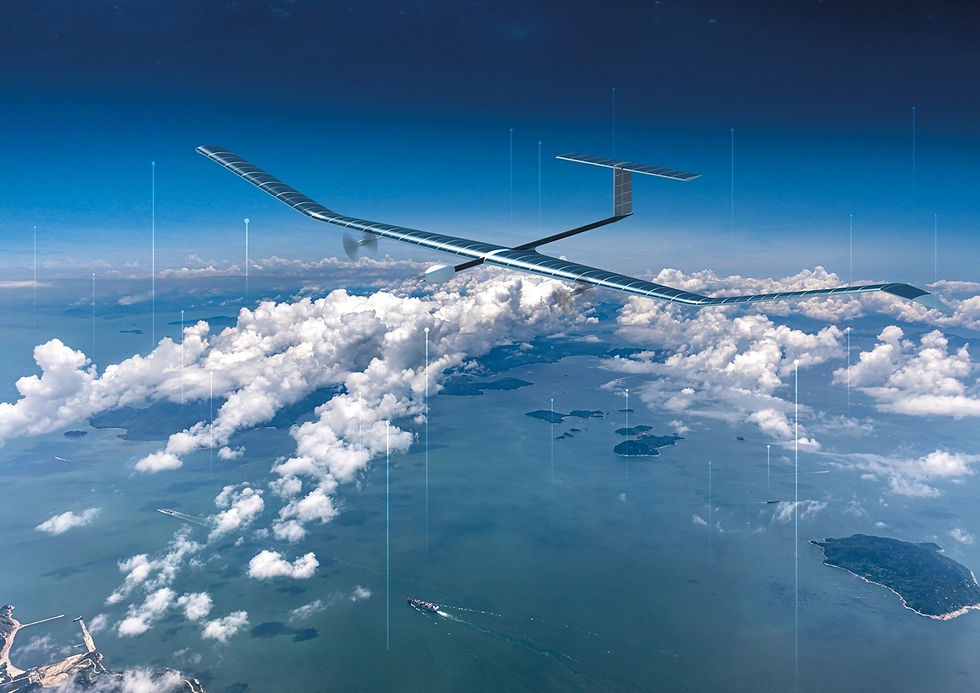Airbus Introduces the Zephyr Solar-Electric Unmanned Aerial System!
- Jaycee
- Jul 15, 2022
- 2 min read
Updated: Jul 18, 2022
The Zephyr: Unmanned Aircraft and the Many Possibilities!
Airbus introduced the Zephyr, an unmanned aircraft, and I immediately had a million questions. This Solar-Electric Stratospheric UAS (unmanned aircraft system) mainly aims to provide new See, Sense, and Connect capabilities to military, commercial and institutional customers.
My first question is, what exactly are see, sense, and connect capabilities? First, see capabilities will enable it to provide a range of continuous surveillance through high-resolution imagery and video capture for intelligence gathering. In other words, the military is getting a drone with enhanced capabilities beyond what they currently have.
Think of this unit as a satellite for the stratosphere, but with several significant advantages. This aircraft can remain in a general area for long periods, whereas satellites have to orbit the earth fully. Maintenance on satellites is costly and requires space flights for repairs (if this is even worth it). The Zephyr can return to the sender for repairs, upgrades, and even changeouts of payloads.
Sense capabilities will focus on the stratosphere and provide enhanced/more precise data based on the environment. Meteorology just received a significant technological boost.
Connect capabilities are probably the most intriguing possibility yet. Airbus states that
Around four billion people across the globe are unconnected
Zephyr is capable of extending reach and/or capacity of terrestrial networks
One Zephyr has the coverage equivalent to that of 250 cell towers
My second question is a 2-parter. How does Zephyr achieve all of this without becoming a nuisance in the sky and adversely affected by weather? The Zephyr flies well above commercial aircraft, roughly 13 miles above the ground. Typical aircraft fly 5 to 7 miles above the earth, so traffic congestion is not an issue as the Zephyr will fly several miles above. Even more critical, this height is well above any adverse weather, which would affect the efficacy of the air vehicle.
My third question is, how long can the Zephyr remain airborne? The answer would be indefinite in a perfect world as the unit is solar-electric. Unfortunately, batteries are not unlimited and will eventually need to be replaced. The current battery system allows the Zephyr to fly all day, and the backup secondary system charges during daylight hours to fly all night. The latest testing yielded a continuous flight time of nearly 26 straight days. Given this is still an experimental aircraft, expect this to improve significantly. Multiple Zephyr aircraft in the stratosphere will create redundancy and reliability without skipping a beat.
Key Details:
1. The Zephyr is lightweight at 75kg (165lbs)
2. It has a wingspan of 25m (82 feet)
3. Given Zephyr’s ability to fly 24/7, its flight time is carbon neutral




Comments